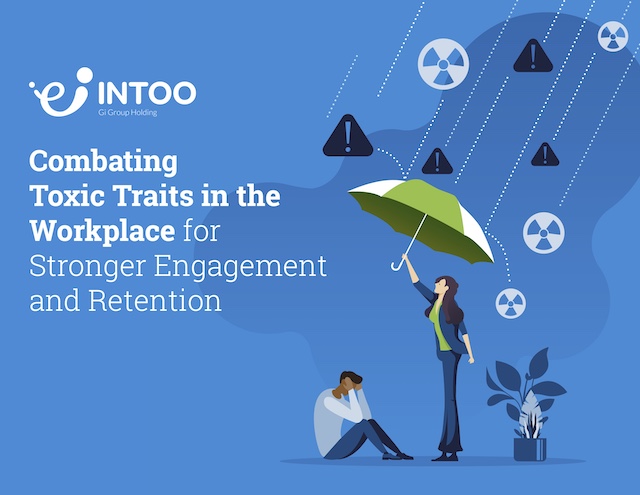Headcount planning is the strategic process of determining and managing the number of employees needed within an organization. It involves several aspects of business: current workforce, future business goals, budget constraints, and operational needs. Rather than guessing how many people you need, this planning involves analyzing existing staffing levels, forecasting future requirements based on business objectives, and aligning the results of these two steps with financial resources.
Headcount planning encompasses various factors:
- Evaluating departmental needs
- Considering market trends
- Projecting growth or contraction
- Factoring in skills and expertise essential for company success
The aim? To ensure the right people, with the right skills, are in the right positions at the right time.
Download tips on hiring with confidence and rejecting candidates with kindness.
Why Is Headcount Planning Important in Business?
Headcount planning is a vital business process for several key reasons. At its core, it enables organizations to optimize their most valuable asset—talent. Strategically forecasting hiring needs allows companies to acquire skilled people to meet day-to-day workloads and fuel growth priorities. Rather than reacting to needs as they arise, proactive planning identifies must-fill roles aligned to new projects and revenue goals. Models can rapidly adapt staffing levels up or down depending on changing market conditions. This agility is invaluable.
There’s also an explicit cost equation to thoughtful headcount planning. Hiring too aggressively without projections risks overstaffing during slower expansion or economic decline. However, understaffing threatens productivity, burnout, and inability to capitalize on opportunities. Defining needs quarterly rather than annually provides better controls. The numbers drive budgets. Connecting talent acquisition to broader financial planning ensures hiring activities match fiscal realities across the business.
Additionally, proactive planning such as building a talent pool reduces scrambling and bottlenecks when filling mission-critical jobs. Developing talent pipelines (including both internal and external resources) well in advance provides access to qualified people. In a competitive labor market, this mitigates significant risks. For these reasons and more, headcount planning is an indispensable compass guiding workforce decisions.

7 Headcount Planning Strategies to Start Using in 2024
Here are 7 impactful headcount planning strategies organizations should focus on:
1. Build agile forecasting models
Building adaptable forecasting models enables talent leaders to shift plans as conditions change. Rather than fixed annual projections, construct fluid quarterly matrices aligning hiring numbers to conservative, moderate, and aggressive growth scenarios. As market factors impact expansion assumptions up or down, staffing models seamlessly pivot in real time. This dynamic approach ensures headcount can scale to match operational needs and strategic priorities under any business climate. It brings agility and precision to hiring activities as new opportunities emerge.
2. Examine workload analytics
Incorporating workload analytics injects vital context into forecasting, leading to precise headcount plans. Examining historical budgets, growth trajectories, staffing levels, and hiring metrics spotlight resourcing gaps and surpluses by the department. Understanding past workforce expansion in relation to revenue and project trends enables more accurate modeling of future talent demands. The regular analysis also feeds capacity planning, highlighting overburdened teams nearing bandwidth limits. Fact-based examination of resourcing flows allows organizations to right-size departments through proactive hiring and workforce balancing.
3. Develop an internal talent mobility program
Developing internal talent mobility programs is a strategic approach to filling open organizational roles. Rather than immediately recruiting externally, there is merit in first assessing existing talent who demonstrate high performance and potential. Promoting from within or facilitating lateral transfers for those ready for new challenges boosts employee retention, motivation, and skills development. By creating personalized development plans, offering stretch assignments, and fostering internal networking, organizations can groom their strongest contributors for management and leadership responsibilities when openings arise. A commitment to talent mobility conveys to staff that career growth within the company is valued and attainable while increasing the agility of your workforce and the resilience of your organization.
4. Consult cross-functional leaders
Bringing together finance, HR, and other department heads to consult on headcount planning strengthens forecasts with cross-functional perspectives. Inclusive discussions uncover more details on upcoming initiatives, team members who are being considered for promotions or lateral moves, and projects requiring new or evolving skill sets within teams. Collaboration also surfaces practical constraints around hiring budgets, training investments, or bandwidth limitations that may impact talent acquisition or necessitate internal mobility to fill prioritized roles. Understanding these resourcing tradeoffs and interdependencies allows the group to shape balanced plans. Most importantly, cross-functional consultation enables viewpoints from across the business to guide strategic workforce decisions. This holistic input leads to optimized hiring and assignment of internal resources aligned to multi-stakeholder needs.
5. Prioritize critical positions
When constructing headcount plans, talent leaders must carefully prioritize critical positions delivering outsized impacts on strategic goals. Rigorously analyze factors like revenue enablement potential, customer needs, and skill scarcity risk to spotlight imperative workforce segments. For example, hiring technical talent that unlocks new product innovation may take priority over back-office roles. Likewise, for a services business, ensuring adequate client-facing staff may necessitate accelerated hiring while non-client teams expand more conservatively. Regardless of growth targets, headcount planning must first outline and thoughtfully sequence the most vital positions to fund. This targeted focus on mission-critical hiring protects top objectives even amid broader constraints.
6. Broaden talent pipelines
Building robust talent pipelines lays the groundwork for responsive hiring once demand materializes. Rather than reactively filling open roles, proactively source internal talent along with both active and passive external candidates aligned to forecast needs. Nurturing ongoing relationships with talent communities creates qualified pools across critical segments, ready for quick activation. Similarly, alumni networks, user conferences, and professional associations help to connect with target candidate segments.
Also assess the skills and strengths of your existing talent to determine whether any current employees would be desirable for open positions. Taking these steps expands and diversifies sourcing channels beyond typical job boards. Getting ahead of the curve on pipeline development enables faster fulfillment of anticipated roles while accessing higher quality and more diverse talent and enabling career development and growth for your workforce.
7. Continually monitor and adjust
Implementing robust systems for continuously monitoring workforce metrics enables agility in headcount planning. Set up dashboards tracking key talent indicators across hiring performance, workforce composition, retention risk, pipeline health, and critical skill gaps. Establish quarterly reviews to formally assess trends and build flexibility to course-correct strategies in real time if the market shifts rapidly. With regular visibility into measurable outcomes, teams can spot when certain hiring channels over or under-perform expectations and when diversity hiring initiatives fail to progress diversity representation. Identify what works, what falls short, and where recalibration is required.
What’s the Difference Between Headcount Planning & Workforce Planning?
Headcount planning and workforce planning are related but distinct talent management processes, with the former focused on targeted headcount growth and the latter taking a broader view of optimizing the workforce.
Headcount planning focuses explicitly on defining an optimal number of hires to make across critical roles in an upcoming period based on business objectives, growth trajectories, and budget availability. The output is an approved headcount plan detailing exactly how many new hires are required in each area. Tactically, headcount planning guides targeted recruiting efforts, ensuring a budget for the approved headcount.
Alternatively, workforce planning takes a more holistic look at the organization’s talent needs based on strategic business goals. Workforce planning forecasts talent gaps and surpluses based on capabilities critical for future success. It assesses trends in attrition risk, skills evolution, automation impacts, and more.
The output of workforce planning may include:
- Recommendations like investing in career coaching and reskilling programs.
- Exploring project-based, temporary hiring.
- Highlighting areas where alternative workforce solutions could supplement hiring.
While effective headcount planning is crucial for targeted hiring, broader workforce planning allows organizations to build agility and resilience through multidimensional talent strategies beyond just headcount growth. The two serve as interconnected inputs shaping an integrated approach to talent management.
Conclusion
With competitive hiring markets and evolving workplace dynamics, implementing robust headcount planning is no longer optional for people leaders. The strategies outlined here, from aligning plans to strategic priorities to emphasizing candidate experience, serve as a roadmap to build more proactive and data-driven hiring. Don’t wait for an urgent staffing crisis before planning headcounts. Start now by consulting with cross-functional partners to forecast workload staffing needs based on your team or department’s upcoming projects and organizational objectives. Develop a simple tracker to map these hiring needs to budget over the next year. Even basic headcount planning creates structure amidst uncertainty, enabling leaders to advocate for critical roles. Refine your approach over time by layering in performance data, pipeline health metrics, and diversity tracking to keep strengthening hiring outcomes.
Nurture your talent pool with INTOO’s candidate experience platform.
INTOO offers solutions to help employers nurture external candidates and develop internal talent for an agile workforce and strong employer brand. Contact us today to learn more.











